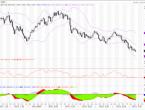Continued high global energy prices will drag down economic growth and slow the recovery process
Global energy prices have soared since the beginning of this year, making the global economy that has just begun to recover after being hit by the epidemic once again face the drag of high energy costs, and may slow the growth rate as a result. Recently, the prices of oil, natural gas and coal have risen sharply, and the prices of other commodities have also risen. At the same time, there is still a supply chain disruption. This unlucky situation has begun to put pressure on the prospects for economic activities.
Economists said that for now, rising oil prices will not lead to negative economic growth in the United States, but rising energy costs will still bring serious economic consequences, especially in regions such as Europe where natural gas prices have soared beyond expectations. While American consumers are already paying for the re-rising of gasoline prices, heating and electricity bills may rise even more this winter.
So far this year, oil prices in the US futures market have risen by more than 65%, while natural gas prices have risen by more than 112% since January. Since October last year, gasoline prices have risen by approximately $1.10 per gallon, and are currently at $3.27 per gallon. Although oil prices fell to a negative range during the peak of the epidemic in 2020, analysts now more generally believe that oil prices will rise above 100 US dollars as the general trend.
Different from previous years, this year's oil price increase is not due to the supply crisis of crude oil itself, but the faltering supply of natural gas, coal and renewable energy, forcing consumers to turn to the oil market. Previously, due to the impact of abnormal weather, European wind power generation was extremely inadequate, leading to a surge in demand for natural gas substitution. The sky-high natural gas cost triggered a wave of substitution demand, which also pushed up the prices of crude oil and coal in the international market.
In fact, in Europe and Asia, where energy supply is scarce, about 600 to 800,000 barrels of fuel oil will be used as a substitute for natural gas every day in the next few months for power generation and certain manufacturing industries. Due to the bottleneck of production capacity and the listing of shipping costs, Citigroup predicts that under the impact of winter demand, the average price of natural gas in Europe in the fourth quarter will exceed US$30 per million British thermal units and more than US$32 in Asia. In extreme conditions, if the winter is very cold, gas prices are more likely to soar to US$100 million British thermal units, which is equivalent to about US$580/barrel of oil. In contrast, the current trading price of US natural gas futures is still only US$5.25 per million British thermal units.
In addition to natural gas, coal prices have also been rising and supply shortages have caused a shortage of electricity supply in China, which relies on coal-fired power generation. The inventory of domestic power plants hit a 10-year low in August. This does not rule out the possibility of importing more high-calorific fuel oil and natural gas in an emergency. Therefore, the pattern of sustained high international energy prices will not be changed in the short term.
Bernstein energy analysts studied past periods of sharp price increases and found that when energy costs accounted for 7% of global GDP, a recession could occur. When energy costs remain above this level for more than a year, the possibility of economic recession will rise sharply.
Analysts pointed out that although the recent surge in energy costs may only be temporary, after energy costs have been so high for more than a year, or oil prices have further risen above 100 US dollars per barrel, it may lead to a slowdown in global economic growth. The reason is This will significantly squeeze the available funds of consumers, and at the same time force central banks to reduce the supply of liquidity, causing the real economy to become ischemic. For some emerging market countries, this is particularly unbearable.












